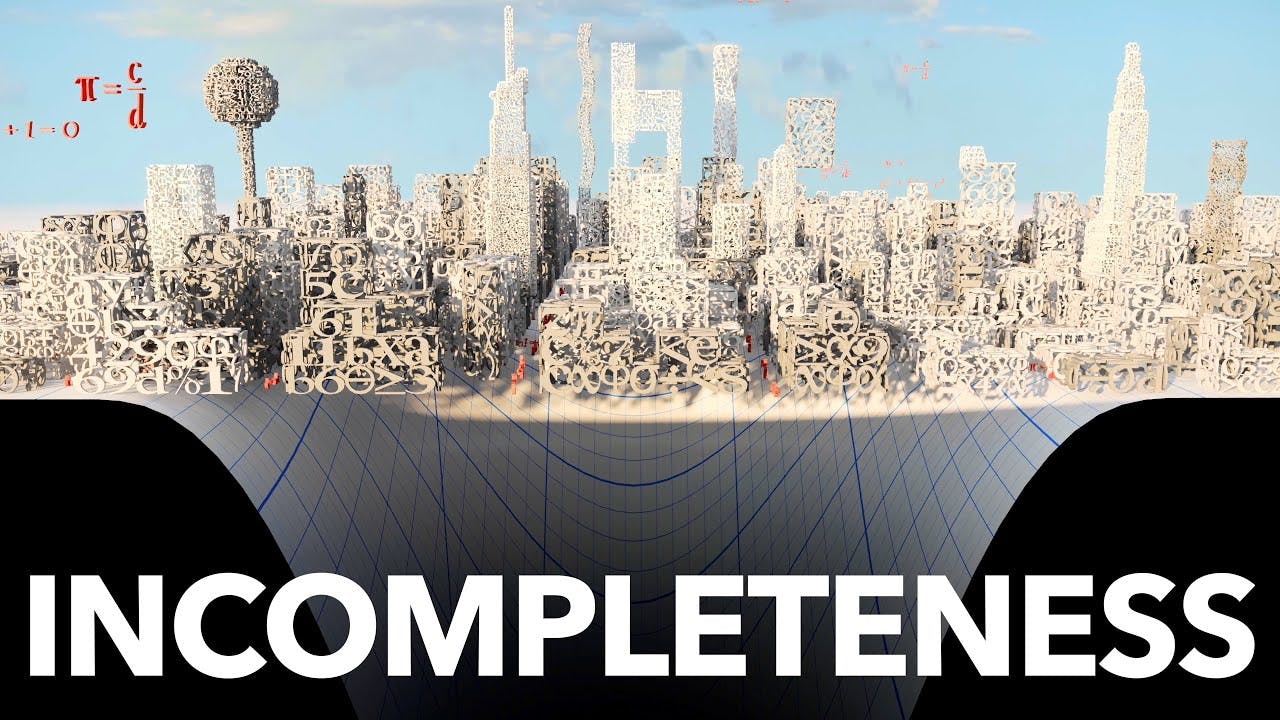Math's Fundamental Flaw
()

Game of Life (00:01:08)
- John Conway, creator of the Game of Life, passed away in 2020 due to COVID-19.
- The Game of Life involves an infinite grid of cells which are either alive or dead.
- It's governed by two rules: a dead cell with three live neighbors becomes alive, a live cell with less than two or more than three neighbors dies.
- The game evolves automatically, generating a variety of patterns that may be stable, oscillatory, or even move across the grid.
- Some patterns grow indefinitely, but predicting the ultimate fate of any pattern is undecidable.
- No algorithm can determine in finite time whether a pattern will stabilize or grow without limit.
- Many systems besides the Game of Life are also undecidable, such as Wang tiles, quantum physics, and even the game Magic: The Gathering.
Start Writing Down a New Real Number (00:05:31)
- Georg Cantor's proof showed that natural numbers and real numbers between 0 and 1 are not the same in size; real numbers are more numerous.
- Cantor's diagonalization argument constructs a new number that cannot be on any list pairing naturals with real numbers, showing the existence of uncountable infinities.
- His work was part of a greater reevaluation of mathematics, challenging notions like the concept of a limit and the true nature of infinity.
- A divide among mathematicians arose, with intuitionists rejecting Cantor's work and formalists embracing it, aiming to establish a rigorous mathematical foundation through set theory.
- Cantor's set theory led to paradoxes highlighted by Bertrand Russell, such as the set of all sets that don't contain themselves, which prompted further scrutiny of mathematical foundations.
Paradox of Self-Reference (00:09:27)
- Russell discovered a paradox using a village barber analogy, which led to a contradiction about who shaves the barber.
- Intuitionists believed this paradox proved set theory was flawed.
- Mathematicians, including Zermelo, resolved this issue by redefining set concepts to remove problematic sets.
- Despite these resolutions, self-reference problems in math persisted, highlighted by Hao Wang's undecidable tiling problem, similar to Conway's Game of Life.
Gödel's Incompleteness Theorem (00:20:37)
- Gödel demonstrated that any sufficient mathematical system will contain true statements that lack proofs.
- His work proved Hilbert's belief in the absolute completeness, consistency, and decidability of mathematics was incorrect.
- Gödel's Incompleteness Theorem suggests that truth and provability are not synonymous.
- Gödel's second theorem shows that a consistent formal system cannot verify its consistency, leaving the possibility of future contradictions.
- The only remaining question from Hilbert is whether math is decidable, an issue addressed separately.
Is Mathematics Decidable (00:22:16)
- In 1936, Alan Turing invented the concept of the modern computer, originally imagined as a mechanical device to determine the decidability of mathematics.
- Turing's machine consists of an infinite tape with zeroes or ones, a read/write head, and a set of instructions.
- The Turing machine can perform any computable algorithm with its simple operations: overwrite, move left or right, and halt.
- Turing machines can potentially solve problems like the twin prime conjecture by halting when a solution is found or running infinitely if unsolvable.
- Turing proposed a hypothetical 'H machine' capable of determining whether any Turing machine would halt on a specific input.
- Upon modifying H to create H+, it was proven that such a machine could not consistently predict its own behavior, leading to a contradiction.
- Consequently, Turing concluded that mathematics is undecidable, implying some problems might be unsolvable, such as the twin prime conjecture.
The Spectral Gap (00:27:32)
- Gapless quantum systems can undergo phase transitions at low temperatures, whereas gapped systems cannot.
- Determining if a quantum system is gapped or gapless was shown to be an undecidable problem in 2015.
- Even complete knowledge of a system's micro-level interactions does not guarantee the ability to predict its macro-level properties.
- Turing's machines, representing the pinnacle of computational systems, still define the limits of what computation can achieve.